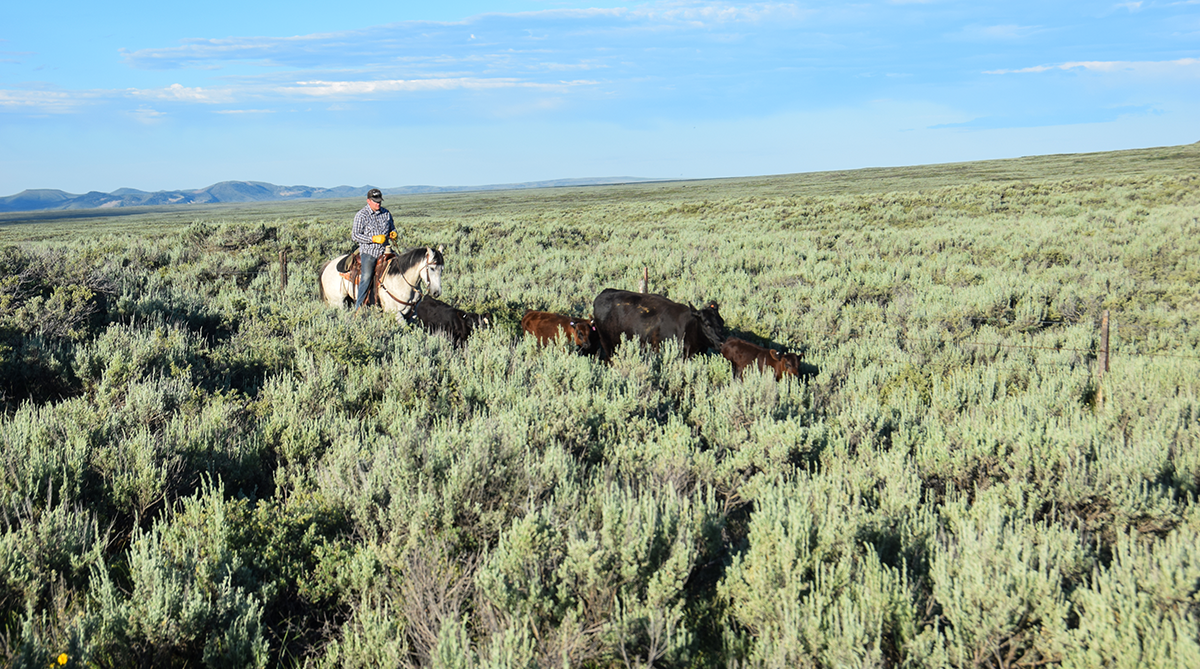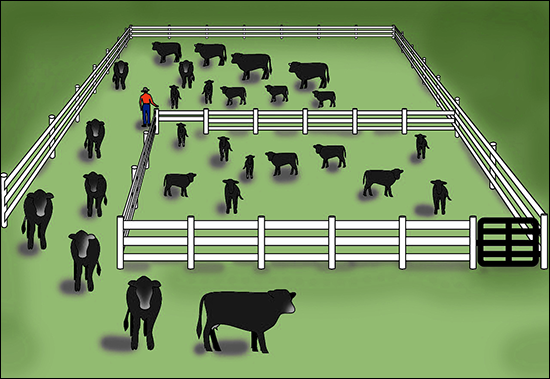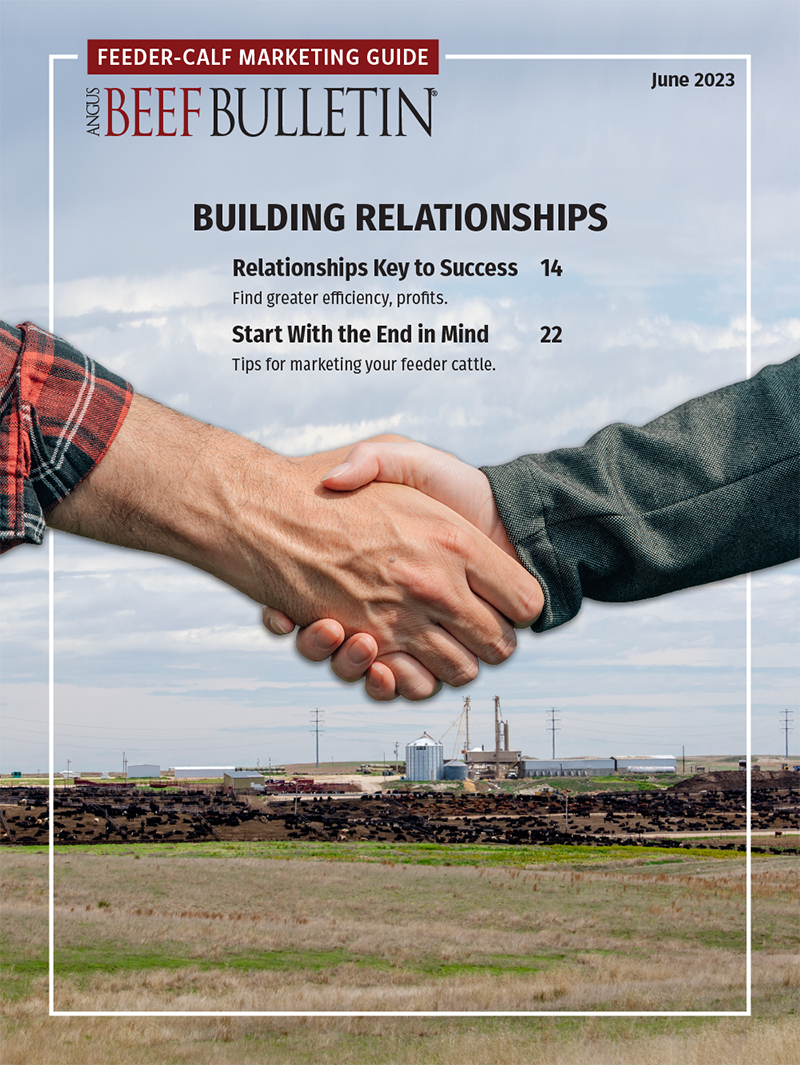
Bring 'em in Slow and Easy
Tips for working cow-calf pairs.
Dylan and Colleen Biggs have been ranching near Hanna, Alta., Canada, for several decades. Early on, Dylan realized the benefits of handling cattle quietly. He learned many techniques from Bud Williams, a cattle-handling expert who spent many years in Alberta teaching low-stress methods for moving and sorting cattle.
“Bud Williams said the thing that sets the stage for good handling in a corral is how the cattle were brought in. If they arrive upset, it will be more difficult to handle and sort them,” Dylan says.
 Use your position to shunt that calf through the stripper gate, Biggs advises. Too often, people use a stick or a flag. This allows them to cue too aggressively. The calf just needs to briefly stop while mom goes by. Then you back up and block him, so the calf has to go a bit to the side, but continues to follow mom, except now he’s on the other side of the fence. See a larger version of this illustration by clicking here. [Diagram courtesy Joe Stookey.] |
He recalls Williams saying 90% of the problems people have in handling facilities reflect the state of mind of the cattle when they entered the facility, which is reflective of the process you went through out in the pasture to get them in. Cattle are a lot more forgiving if they can walk into the corral calmly, rather than being forced by people running and yelling.
“Bad behavior from cattle is typically blamed on the cattle, but it is merely an expression of their anxiety,” explains Dylan. “Consider how we would feel if we were coerced into tight quarters; we would not feel comfortable in there with the same people who tormented us to get us in there!”
If we want to improve how our cattle behave in the corral, we need to figure out how to get them in without upsetting them.
In the 25 years he’s led livestock handling clinics, Dylan says, people have been more ready to embrace changing the design of their corral than their behavior. A well-designed facility helps, but it doesn’t solve all the problems.
“Cows that have been through a facility — and trust you — are very willing to just walk by you, rather than hurrying or running. Calves are more timid and cautious. They haven’t gone by very many people in their short life,” Dylan notes.
Calves are more apt to pause as pairs come past the person at the sorting gate, making it easy to sort them off. The cow will keep going out the gate, and the calf will pause. If you utilize a panel gate (often called a bumper gate), the calves can scoot under into the next pen.
Often people prefer to use a stick or flag to get the calf’s attention.
“There’s nothing wrong with that, except many people tend to cue too aggressively,” says Dylan. “Ideally, you want to briefly stop that calf to [get it to] look at you for just a second and let mom by. Then you back up and block him, so the calf has to go a bit to the side and under the bumper gate and then follow mom along, but on the other side of the fence. … You don’t want to cue aggressively and turn him around or push him back toward the herd.”
How much you move will depend on the cattle and how flighty or how calm they are. It’s like participating in a dance; you move in response to them. There will be times when you have a couple calves coming with the cow, or there might be a calf on each side of her. This can mess up your sort. In this situation, just stop the movement until you can shuffle things into position to get what you want, advises Dylan.
Human instinct is to slam the gate shut, so you don’t lose the extra calf, but your positioning at the gate should be into the pen a bit, allowing you enough room to back up toward the gate. The most effective way to stop movement is to back up, not to slam the gate in front of the cow, he says.
Backing into the gate, actually blocks the gate and takes pressure off the animals at the same time. This avoids turning them all around and getting them balled up. They will be slowed, but still facing you, says Dylan. This gives the cow opportunity to keep coming forward. The calves might hesitate, and you can aim them toward the calf gate without losing time or efficiency.
Calm people make calm cattle.
Editor’s note: Heather Smith Thomas is a cattlewoman and freelance writer from Salmon, Idaho. [Lead photo by Paige Nelson.]



